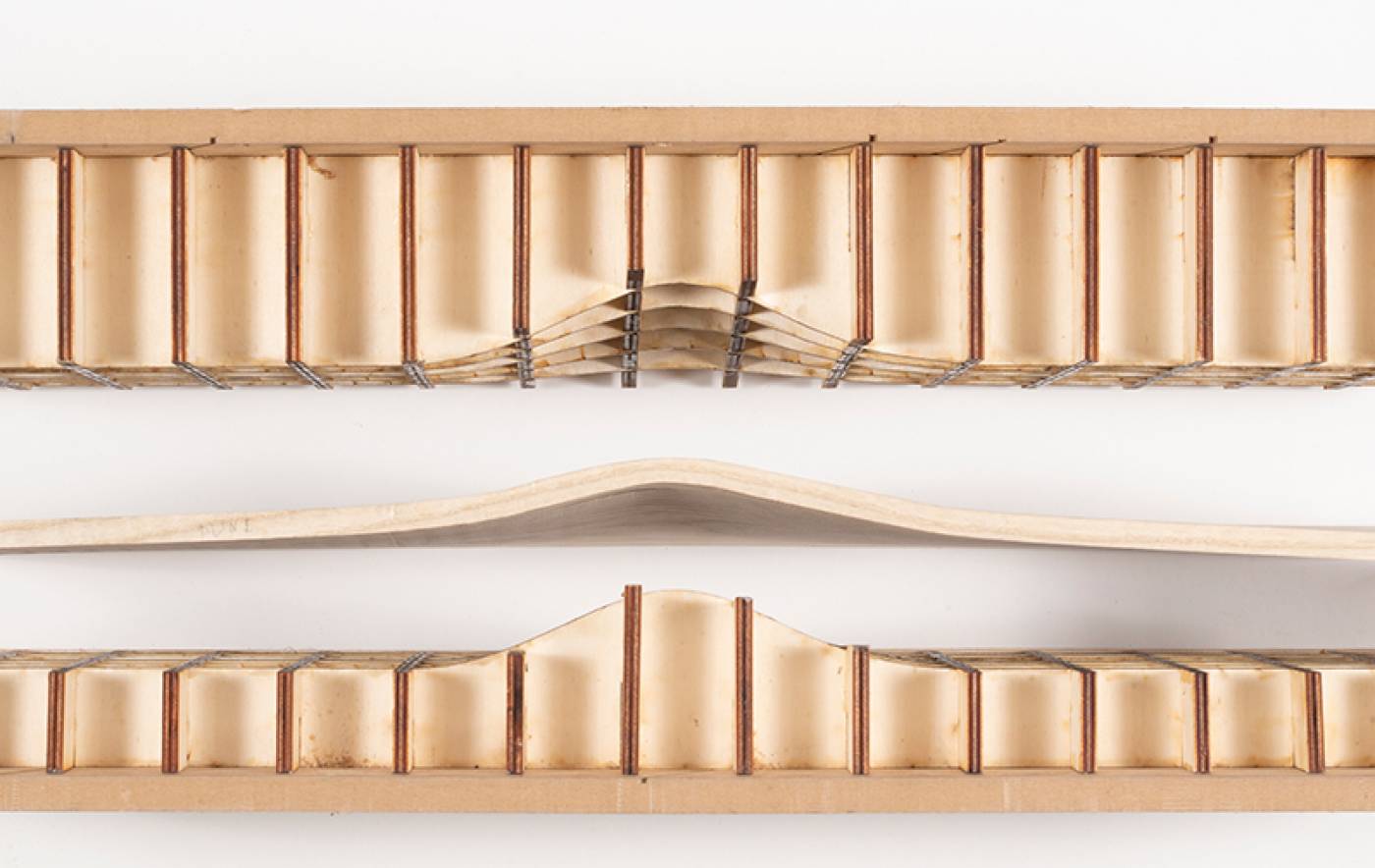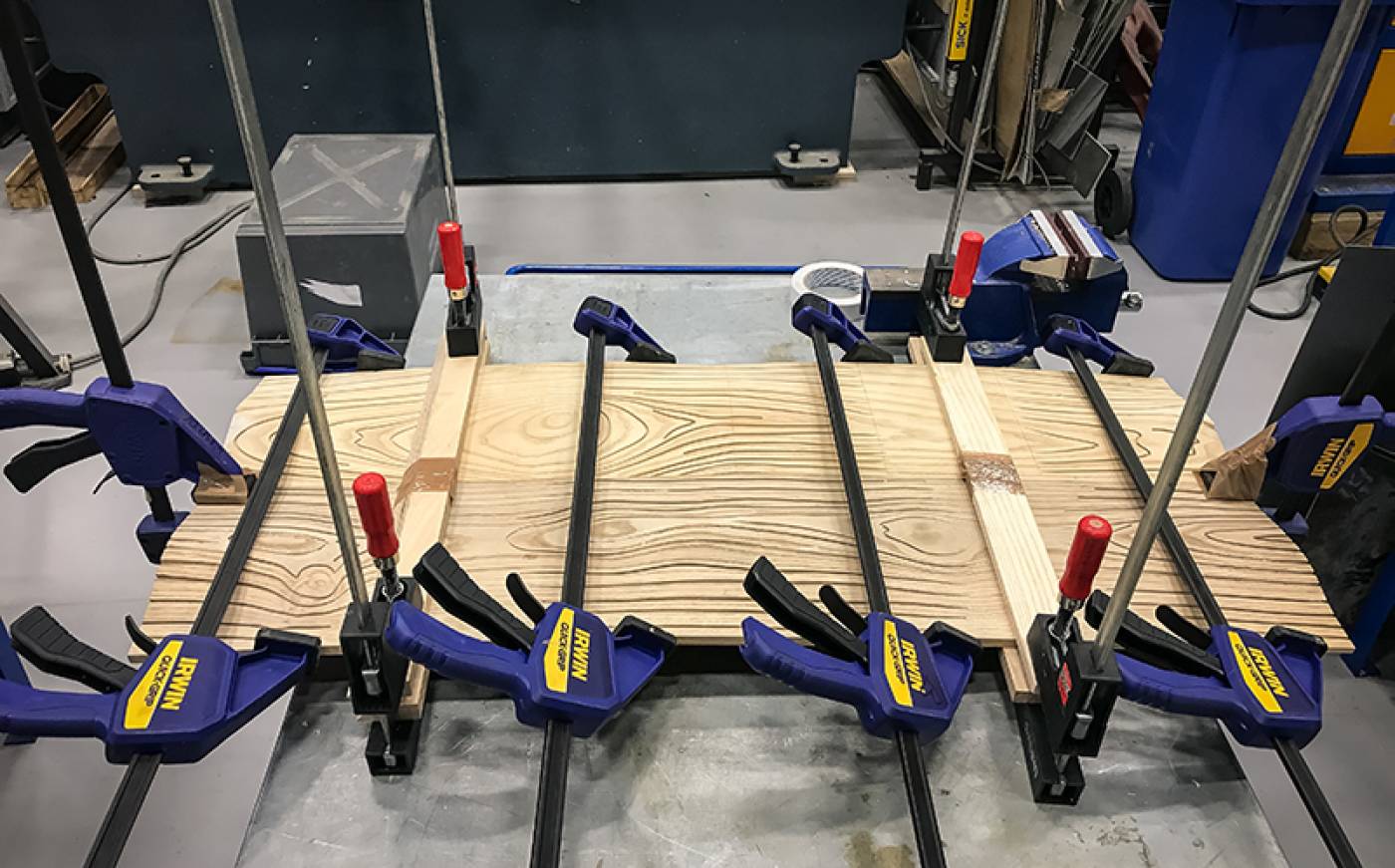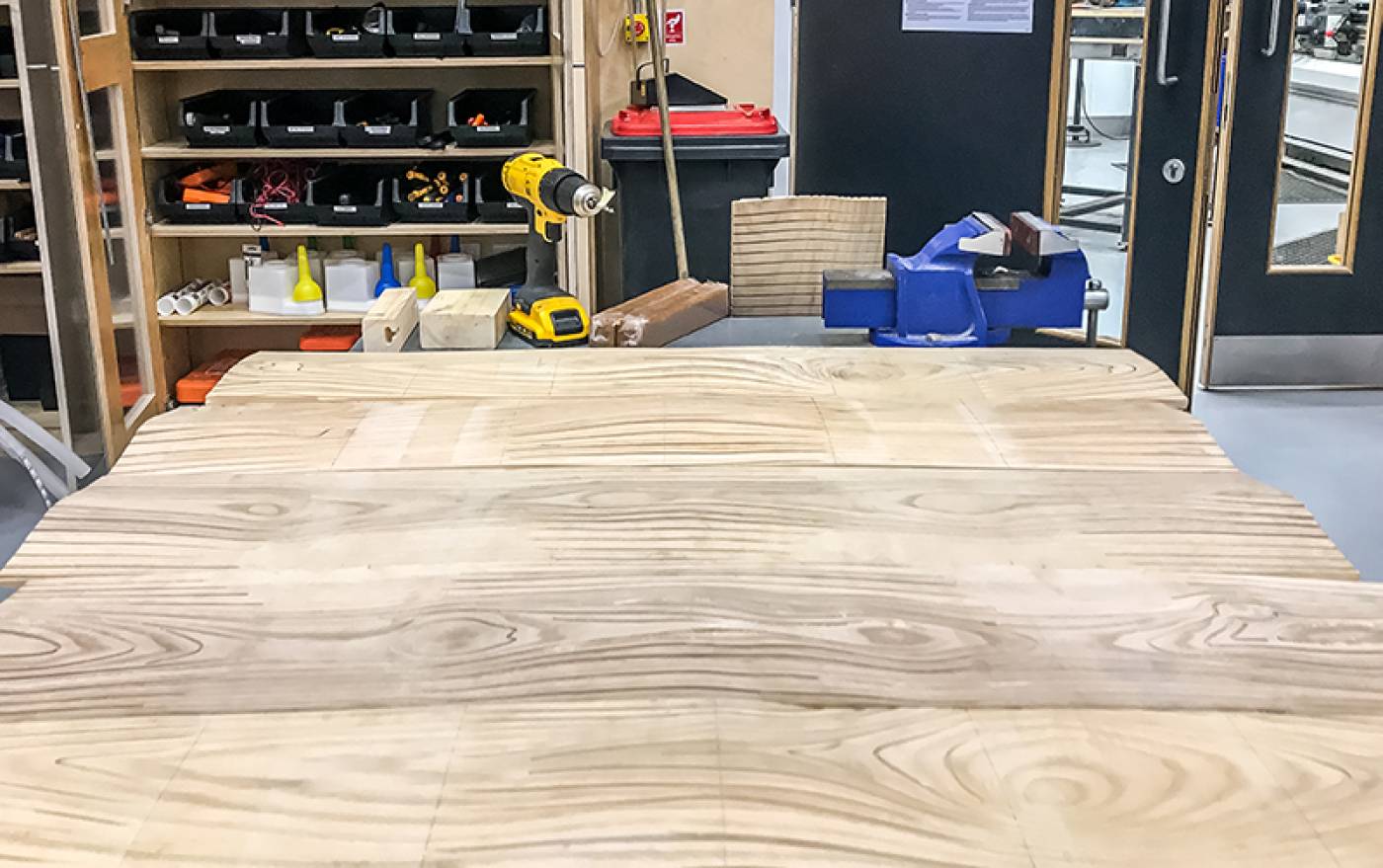Andrea Guillen Mendoza



This project focuses on the use of kerfing and steam-bending to enable a plastic and free-form deformation of wood surfaces. The swelling and contracting of timber through moisture change is relieved by cutting precise kerfing patterns within the deformed surface. By removing a minimal amount of material through the patterns, more space is created for the compression and expansion of the material, enabling faster deformation and bending.
Typical kerfing methods utilise a rotary saw to cut straight grooves into the material. The use of CNC milling allows more complex kerfing patterns to be considered and explored. Therefore, the purpose of this research is to extend the limits of timber deformation and improve its bending behaviour through the combination of both kerfing and steam-bending. This combined process is centred around three parameters: pattern, depth of cut, and wood fibre orientation. Ash was selected as the wood species of choice, due to its high bending capacity and ease of use. Using an adaptive kerfing pattern allows the process to respond to varying and freeform geometry, using different patterns in areas of high curvature than in flatter, less deformed areas.
- Images
1. Steam-bending process with ‘waffle’ mould.
2. Assembly with dowel joinery.
3. Assembly of panels.
 Close
Close

